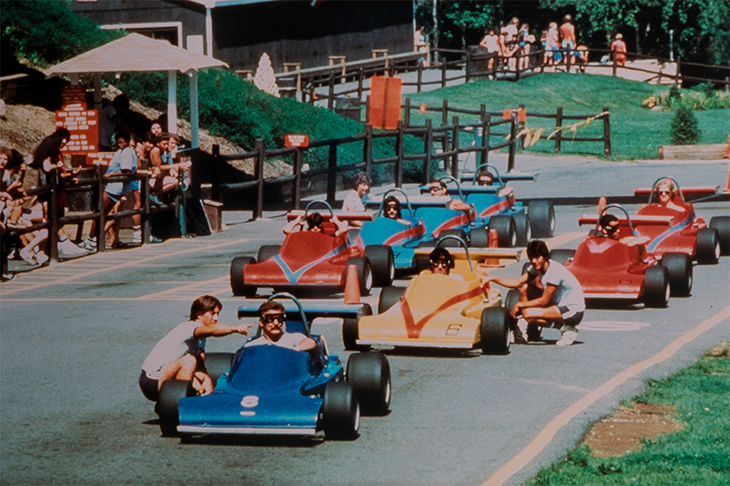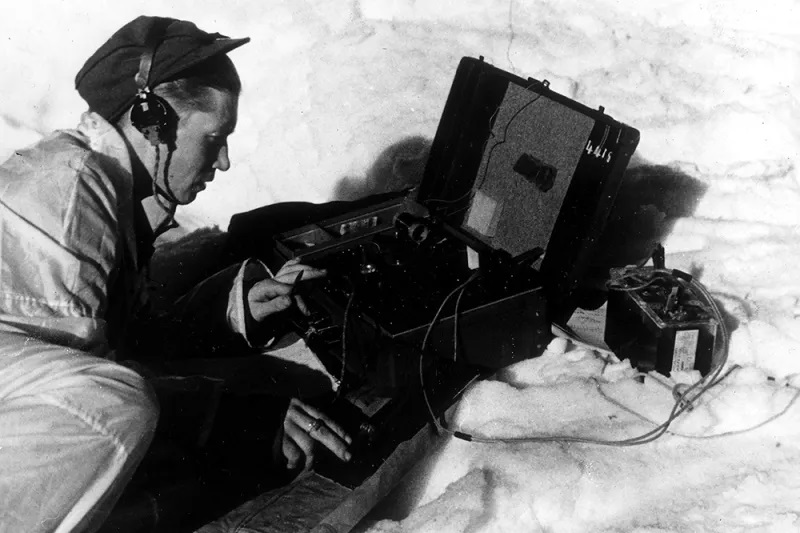Before reading this book, the only thing I knew about Action Park was that it had lent its name to Shellac’s 1994 debut album At Action Park. Shellac, one of whose members is the notoriously contrarian music producer Steve Albini, play pummeling, hazardous, post-hardcore rock at ear-splitting volume and occasion much joy in anyone who chooses to attend one of their concerts, at which alcohol will be invariably consumed, pain endured and physical danger defied.
After reading it, I was struck by how fitting the title was both to the music Shellac play and the circumstances under which they play it, never mind that the group claim it’s a coincidence and that the drummer came up with the name ‘because it sounded cool’. Between 1978 and 1996, if you spent a day at Action Park, New Jersey, you took your life in your hands, after which you lined up to do it again. ‘The risk did not keep people away,’ observes Andy Mulvihill. ‘The risk is what drew them to us.’
Action Park was founded by a go-ahead businessman called Gene Mulvihill, an entrepreneur who had no experience whatsoever of running an amusement operation. His son, whose memoir this book is, writes:
‘In contrast to Disney’s carefully conceived fantasy lands, my father pieced together a series of ambitious and often ill-advised attractions on the side of a ski mountain in rural New Jersey that he had come to own virtually by accident.’
Without the budget to compete with major players like Disneyland or SeaWorld, Gene became an unlikely pioneer in the industry into which he had not so much stumbled as crash-landed:
‘He set himself apart by promising guests they were in charge of their own thrills… “People like not being restricted,” my father told reporters, who inevitably asked why his customers were bleeding. “They want to be in control.”’
This quasi-Nietzschean philosophy became the park’s identity: that which doesn’t kill you makes you stronger, unless it kills you, in which case we will see your grieving relatives in court. Its best known slogan, coined by Mulvihill senior, was ‘Action Park — where you’re the center of the action!’ Visitors soon amended this to ‘Action Park — where you’re the center of the accident.’ Local nicknames included Traction Park and, this being America, Class Action Park.
The book opens with a description of the teenage author testing out a slide called the Cannonball Loop, effectively a gigantic asbestos drinking straw with a 360-degree knot at the end of it:
‘I peer into the opening. The smell of the industrial glue that adheres the foam to the tubing stings my nostrils. Later, the fumes from this same glue, combined with a lack of ventilation, will cause workers erecting other rides to pass out, angering my father with their reduced productivity.’
Bruised and dizzy, Mulvihill triumphantly survives his plunge down, right the way round and through the Cannonball Loop:
‘The next person to slide down the Loop without padding or a helmet smashes his face into the wall of the tube when he hits that first terrible corner, losing his two front teeth. The guy after him isn’t much luckier. He cuts his arm on the teeth, which are still stuck in the slide.’
The book is so artfully arranged that reading it is like taking a tour of the park in its 1980s heyday, beer in hand, chasing one gonzo thrill after another: the Alpine Slide, the Aqua Scoot, the Kamikaze. It is also very funny. An account of the trial run of something called the Bailey Ball made me laugh out loud, then wince, then laugh again:
‘It resembled the kind of thing you stuck a hamster in, except scaled for a human: a human who would, by virtue of being willing to climb inside, presumably possess an intellect comparable to that very same hamster .’
The subtitle is meant to suggest Fast Times at Ridgemont High, Amy Heckerling’s 1982 teen comedy, but one might as easily mention the 1970s disaster movie Rollercoaster, the Jackass franchise or the global TV phenomenon of 2020, Tiger King.
[special_offer]
All in all, this is a particularly American story. Action Park was eventually closed down by a plethora of lawsuits and Gene’s creative insurance arrangements (i.e. he had almost none). His son, and his co-author Jack Rossen, suggest that the park’s faults and fatalities were no worse than those of corporate enterprises with more power to hush up incidents or pay off any claimants. And they conclude that the lesson of Action Park is that if you make health and safety laws matters of personal opinion, people believe that nothing really bad will happen to them. They are visitors to an enchanted kingdom where magic happens and commonsense need not apply. Action Park — land of the free and home of the brave. Enter at your own risk.
This article was originally published in The Spectator’s UK magazine. Subscribe to the US edition here.

























